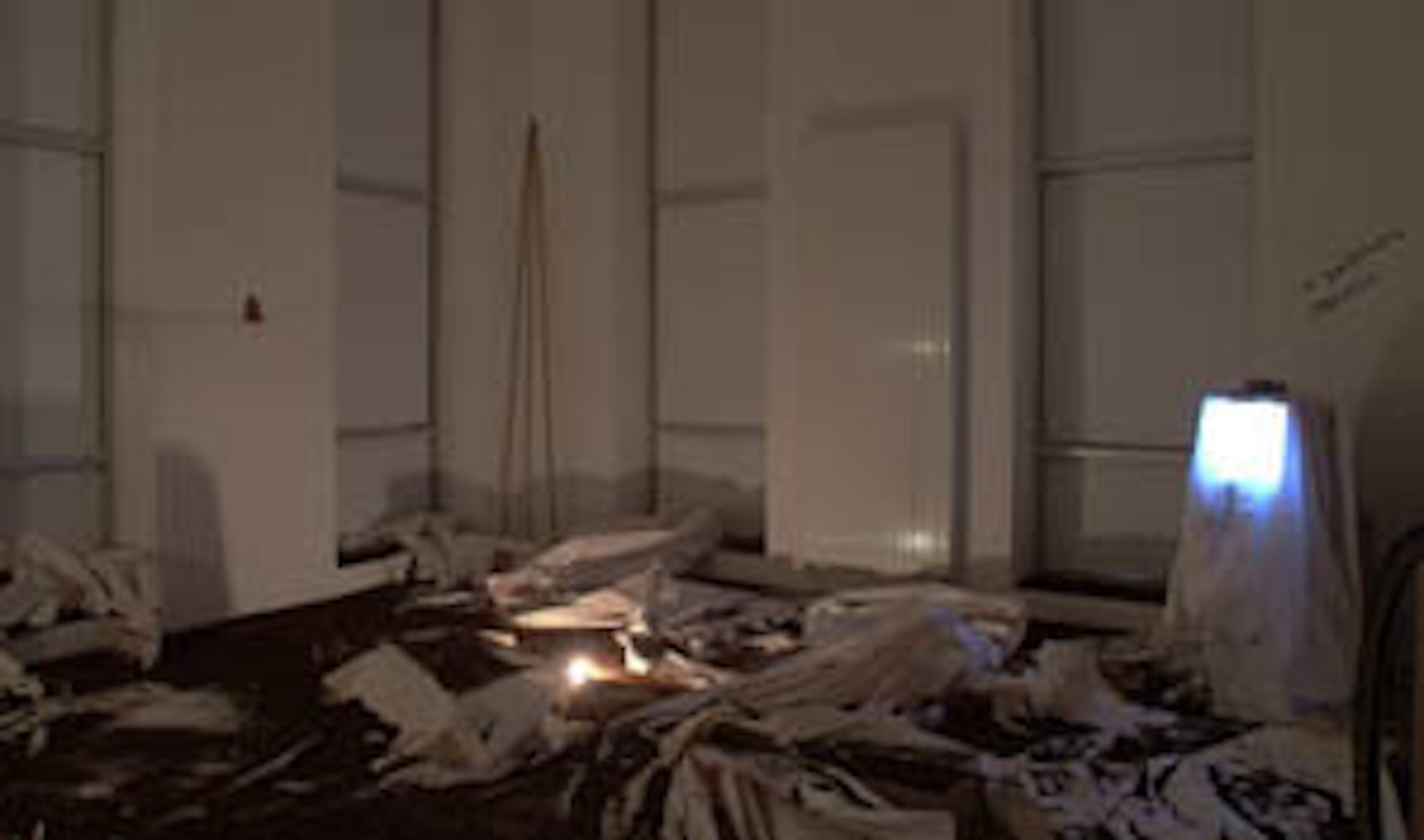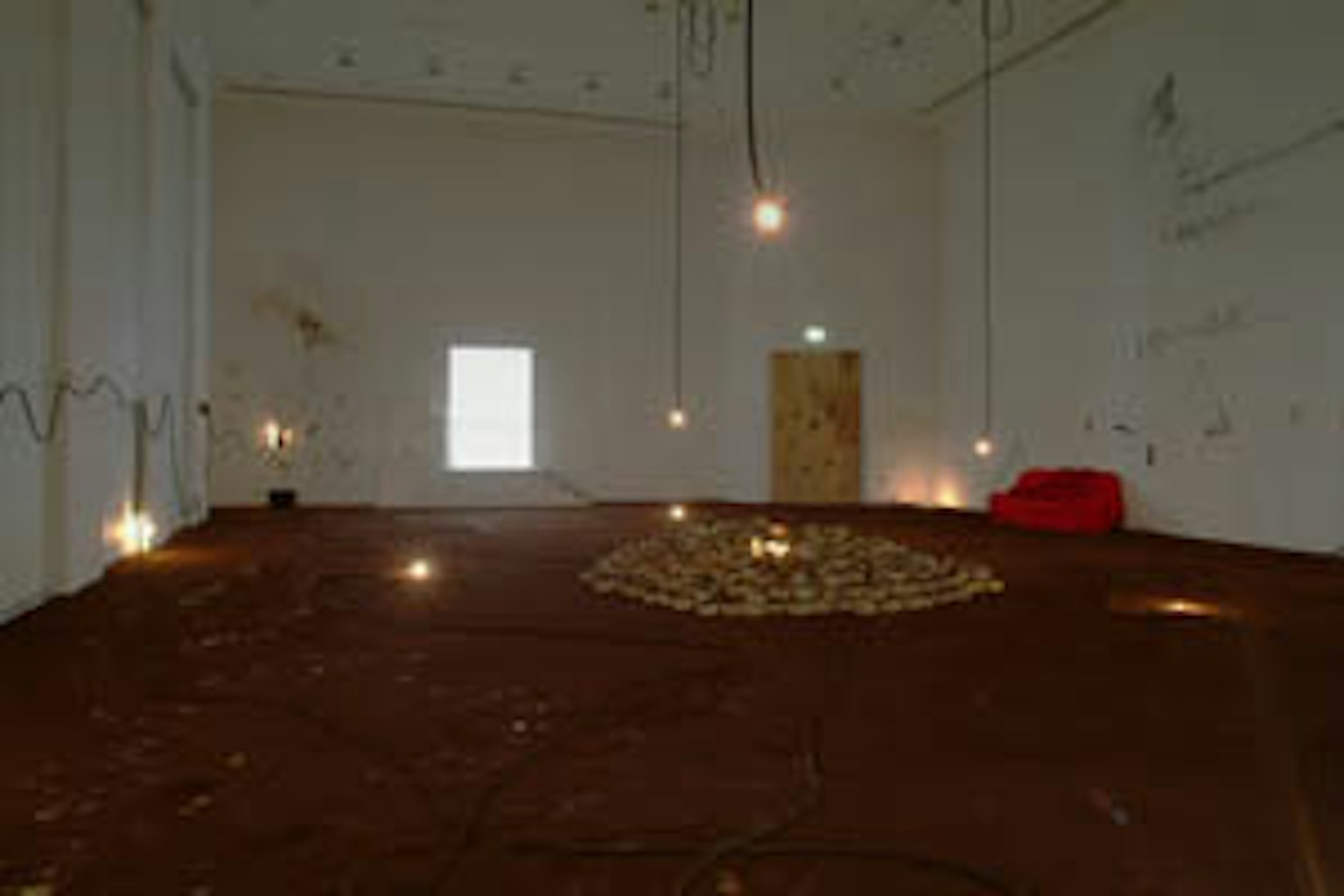Barrio - Beuys
10.Sep.05

The Barrio–Beuys exhibition presents the work of Joseph Beuys (b.1921 Krefeld – d.1986 Dusseldorf) and Artur Barrio (b.1945, Portugal) for the first time in an ‘imaginary dialogue’.
The work of the Brazilian artist Artur Barrio consists mainly of ‘situations’ or temporary synaesthetic installations made of perishable, fragile and organic materials such as coffee, bread, urine, charcoal, wine, cloth, texts and so on. The ephemeral character of Barrio’s installations compels the artist to seek alternative documentary techniques: photo, film, the artist’s book, etc. In this respect, as well as in his approach to material and what is known as the ‘didactic’ mission, there are similarities in his work, in content and form, to that of Joseph Beuys (b. 1921 Krefeld – d. 1986 Dusseldorf). The ‘Barrio – Beuys’ exhibition presents the work of these two artists for the first time in an ‘imaginary dialogue’. The S.M.A.K. will be the first museum where Artur Barrio has created a temporary installation so closely related to the museum, and parallel to the work of Joseph Beuys. Following this, Artur Barrio will visit several other European museums with a substantial Beuys collection where he will be able to continue his ‘imaginary dialogue’.
Artur Barrio (b. 1945, Porto) and Joseph Beuys (b. 1921, Krefeld, d. 1985, Düsseldorf) are from completely different generations and have radically different cultural backgrounds. They never even met. So why this double exhibition? There are actually crucial similarities between the work of these two artists, affinities which each of them developed individually out of their own needs, and which in our opinion more than justify a double ‘exploratory exhibition’. There follows a short explanation of this mutual affinity. The Brazilian artist Artur Barrio, whose exhibitions include the Fortaleza Biennale and the last Documenta, curated by Okwui Enwezor, is one of the alternative pioneers of the contemporary Brazilian art scene. In the seventies, Barrio’s temporary, synaesthetic, highly individual and intuitive installations caused a stormy upheaval in Brazil’s then experimental artistic climate. The materials he used, including coffee, bread, charcoal, wine, material, writing and urine, radically repudiated any art that took the form of a permanent and classically aesthetic experience. The ephemeral nature of Barrio’s work obliged him to look for alternative ways of documenting it – photos, videos, artist’s books and suchlike – which also became an integral part of the work. His consistent choice of always working entirely in situ also has to do with the work’s temporariness. Another important aspect of Barrio’s work is the radical way he puts the art institution into perspective. He considers the curator – in contrast to what is still accepted practice – as superfluous to the idea of the work of art and the exhibition. In his view the curator is forced back into the role of a purely logistical coordinator.
These crucial aspects of Barrio’s work make him one of the more important artists still living who most radically focus on and defend the ties between art and ‘life’ (the intuitive-documentary aspect of art). It is not only in his use of intuitive and emotionally charged material that Barrio displays affinities with the work of Joseph Beuys, but also in his radical questioning of the function of art and its essential linkage to life. Here too – just like Beuys – he adopts a didactic-shamanistic position, as a sort of guru who pushes and pulls at the establishment and distils new ways of thinking and acting from this deconstruction. This explains the SMAK’s plan to mount an exhibition on the oeuvre of these two artists, based explicitly on their similar mentalities. The ‘Barrio – Beuys’ exhibition brings the work of these two artists together for the first time in an ‘imaginary dialogue’. Entirely in keeping with his intuitive ‘in situ mentality’, Artur Barrio will create a temporary installation, based on the museum itself, in parallel with the work of Beuys, which forms a substantial presence in the museum’s collection. This project is part of a broader exploratory plan in which well-known artists from the West-European avant-garde are on each occasion related to an artist who, although important, has always kept to the margins. The possibility of setting up a series of exhibitions on this theme is currently being examined.















